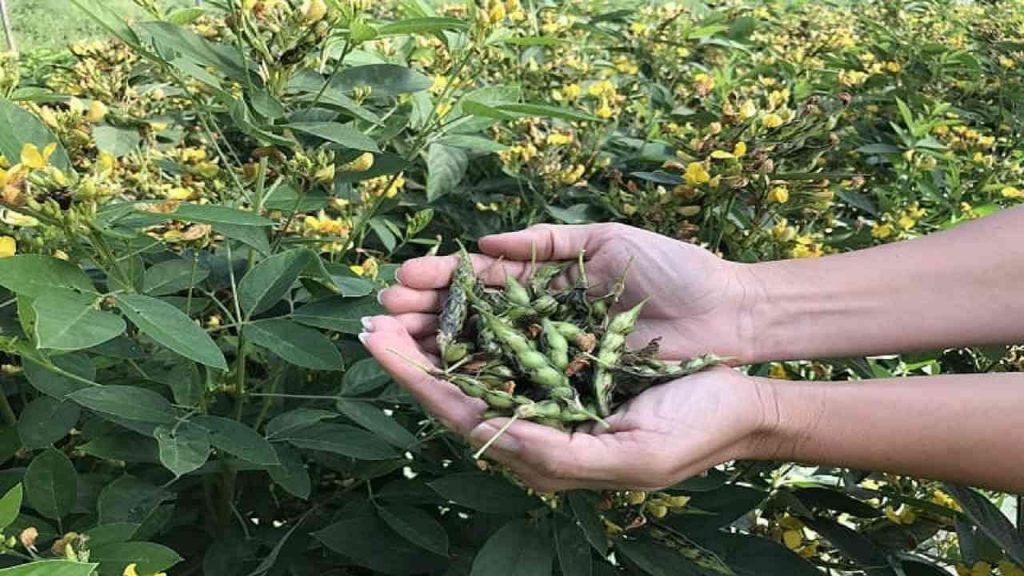Want to do Tur farming? Stay with this blog.
Tur is one of the prime pulses crops, and it is a rich source of Protein. Tropical and semi-tropical reasons are the best for Pigeon Pea cultivation. The Tur is the most important legumes crop of semi-arid and rain-fed tropics. Moreover, you can grow it as single or intermix with cereals. The symbiotic nitrogen fixation of Tur enriches the soil. The most Pigeon Pea producing states are Andhra Pradesh, Gujarat, Karnataka, MP, Maharashtra and UP in India.?

Tur Farming Methods & Requirements
In Tur Farming, you have to take care of some requirements. So, if you fulfill the requirements of this farming, you will definitely get more production. So, let?s know about them.
1. Climate Requirement
You can cultivate Pigeon Pea at a minimum temperature of 15?C to 18?C. On the other hand, the highest temperature for Tur farming must be 30?C to 35?C. The rainfall needed for this farming is 600 to 650 mm. And the sowing operation is best at a temperature of 25? to 33?C. Apart from this, you should harvest the yield at a temperature of 35?C to 40?C for a better and healthy result.
2. Soil Requirement
The variety of soil is suitable for Tur Farming. But if you cultivate Pigeon Pea in fertile and well-drained loamy soils, it can give you the best results. Skip doing its cultivation in saline-alkaline or waterlogged soils as these solis unfit for its cultivation. For good cultivation, the soil pH level must be 6.5 to 7.5.
3. Popular Varieties and Yield
Several varieties of pigeon pea are cultivated in India. Let?s know a bit about them.
- AL-15: 5.5 QTL/acre
- AL 201: 6.2 QTL/acre
- PAU 881: 5.6 QTL/acre
- PPH 4: 7.2 to 8 QTL/acre
- UPAS-120: 6 to 8 QTL/acre
- AL 882: 5.4 QTL/acre
Other State Varieties
- ICPL 151 (Jagriti): 5 QTL/acre
- Pusa Ageti: 5 QTL/acre
- Pusa 84: Harvest in 140 to 150 days
- IPA 203: Hybrid
- IPH 09-5: Hybrid
4. Land Preparation
For Tur farming, one deep ploughing followed by two or three harrowing is suitable to prepare the land. After each ploughing, you should practice planking. So, you should buy or rent a quality tractor like New Holland Excel to keep free from loss and extra expenses. Moreover, to stay safe the yield from water logging conditions, you should prepare the field where water stagnation can not occur. The suitable crop rotations are Arhar with Barley, Wheat, Sufed Senji or Sugarcane.
5. Sowing Method
You should sow the Tur timely as sowing delay can be harmful to your yield production and lead to yield loss. Therefore, the second fortnight of May is a suitable time for sowing the crop. The distance for sowing must be 25 cm between the plant and 50 cm between the rows. Apart from this, you should use a seed drill for sowing the seeds. We suggest a good quality seed drill and the richest tractor like john deere d tractor for the sowing operations. It can save you from extra expenses.?
Moreover, the sowing depth must be 7 to 10 cm. You can sow the seed from the broadcasting method, but the line sowing with the seed drill is more valuable for Tur farming. About 6 Kg seeds are sufficient for one acre of land.
6. Irrigation Requirement
Apply first irrigation around 3 to 4 weeks after sowing, and the rest of the irrigations depend on the rainfall. The most necessary stages for drought stress are flower initiation and pod setting. So, you have to rinse the field in these stages for a healthy yield. Do not excessively irrigate the area because it can lead to more vegetative growth. In addition, the maturity of the crop can be affected if you irrigate the field after mid-September.
7. Pests and Diseases
You should take care of your crop to save it from various pests and diseases. To keep free your crop from pests and diseases, we will let you know about some chemicals, which are:
Pest and Their Control:
- Blister beetles: Spray of Indoxacarb 14.5SC @ 200ml or Deltamethrin 2.8EC @ 200ml per acre
- Pod Borer: Spray of Indoxacarb Spinosad 45SC @ 60ml/100-125litres or 14.5SC @ 200ml per acre
Disease and Their Control:
- Cercospora leaf spot: Captan or Thiram@3gm per kg seed
- Wilt: Spray 300 ml Propiconazole per acre
- Cankers: Spray of Mancozeb 75WP @ 2gm per acre
- Sterility Mosaic: Spray of Fenazaquin 10% EC @ 300 ml/acre
- Phytophthora stem blight: Spray with Metalaxyl 8%+Mancozeb 64% @ 2gm
8. Harvesting
When pods and leaves are of green colour, it is a suitable time for harvesting if you want to harvest for vegetative purposes. And if you?re going to harvest for grain purposes, just do it when 75 to 80% of pods are dry and brown. If you do delay in harvesting, it can damage the seeds. After farming, you have to keep the plants in the sunshine for drying purposes. Now, the threshing takes place. So, do the threshing with the help of a good quality tractor like Mahindra 275 and a rich thresher to do it at a minimum expense. Apart from this, you can thresh the crop by traditional methods.
For more details, stay tuned with us. We will come soon with other methods of farming.









